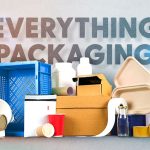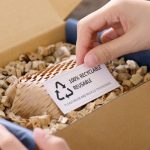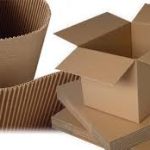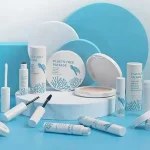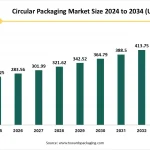The U.S. sustainable packaging market is poised for steady growth, projected to expand from USD 51.23 billion in 2025 to USD 73.81 billion by 2034, at a compound annual growth rate (CAGR) of 4.15% during the forecast period. This growth is underpinned by increasing environmental awareness, government regulations targeting single-use plastics, and innovations in sustainable materials and packaging technologies.
With packaging contributing nearly 40% of the United States’ annual plastic waste, much of which ends up in landfills and waterways, sustainable packaging has emerged as a critical component of efforts to reduce environmental impact and promote circular economy practices.
Invest in Our Premium Strategic Solution: https://www.towardspackaging.com/download-sample/5599
Market Overview: Defining Sustainable Packaging
Sustainable packaging includes materials and solutions designed to minimize ecological impact through renewable, recyclable, or biodegradable components. Key materials include:
-
Paper and cardboard: Customizable, recyclable, and widely used for primary and secondary packaging.
-
Recyclable PET and HDPE plastics: Used where durability and flexibility are required.
-
Compostable materials: Such as PLA (polylactic acid) and cellulose-based films.
These solutions aim to reduce carbon footprints, conserve resources, and align with consumer demand for eco-friendly alternatives.
If there’s anything you’d like to ask, feel free to get in touch with us @ sales@towardspackaging.com
Key Takeaways
-
Market Size: USD 51.23 billion in 2025; projected to reach USD 73.81 billion by 2034.
-
Growth Rate: CAGR of 4.15% between 2025 and 2034.
-
Leading Material: Paper segment dominated the market in 2024.
-
Top Packaging Type: Recycled content packaging held the largest share in 2024.
-
Key Application: Food & beverage industry accounted for the highest revenue share in 2024.
Market Drivers: What’s Fueling Growth?
1. Environmental Awareness and Regulatory Support
Growing recognition of the environmental harm caused by plastic packaging, coupled with regulatory bans and restrictions on single-use plastics, is accelerating the shift toward sustainable materials.
2. E-commerce Growth and Packaging Innovation
The surge in online grocery shopping and e-commerce activity has increased demand for packaging that not only protects goods during transit but is also lightweight and environmentally friendly.
3. Innovations in Biodegradable and Recyclable Materials
Companies are adopting compostable materials such as PLA and innovating recyclable plastics to meet environmental standards without compromising performance.
4. Consumer Preferences Shifting to Eco-Friendly Options
Consumers are actively seeking brands that use recyclable, biodegradable, and refillable packaging solutions, pushing industries to adopt sustainable practices.
Recent Developments: Industry Innovations and Announcements
-
June 2025: International Paper announced plans to explore building a new sustainable packaging facility in Salt Lake City, Utah, to meet growing demand and expand U.S. manufacturing capabilities.
-
May 2025: Diamond Edge Ventures, Inc. (Mitsubishi Chemical Group’s corporate venture arm) invested in Freshr Sustainable Technologies, a Canadian startup focused on active food packaging that reduces food waste.
-
May 2025: INX International introduced Innova Plus NCF, a nitrocellulose-free flexographic ink designed for improved recyclability in flexible packaging solutions.
U.S. Sustainable Packaging Market Trends
1. Rise of Recycled Content Packaging
Recycled content packaging continues to lead as companies integrate post-consumer recycled materials to reduce reliance on virgin resources.
2. Shift Toward Reusable and Refillable Packaging Systems
The reusable packaging segment is gaining traction in industries like food service and personal care, offering cost savings and environmental benefits over single-use alternatives.
3. Innovations in Active and Intelligent Packaging
Advanced packaging solutions that extend shelf life and reduce food waste are being developed, such as those by Freshr Sustainable Technologies.
4. Supporting Government Initiatives and Research
The U.S. National Science Foundation’s (NSF) support for the Center for Plastic, Paper, and Hybrid Packaging End-of-Life Solutions (C3PS) highlights institutional focus on addressing plastic waste challenges.
Key Players in the U.S. Sustainable Packaging Market
-
Amcor Group GmbH
-
The Smurfit Kappa Group plc
-
Mondi Group
-
Tetra Pak USA Ltd.
-
Huhtamaki Americas Inc.
-
Berry United States Group, Inc.
-
Crown Holdings, Inc.
-
Sonoco Products Company
-
Be Green Packaging
-
Evergreen Packaging
These companies are focusing on expanding production capacities, investing in R&D for innovative materials, and adopting circular economy principles to maintain market competitiveness.
Market Segmentation
By Material
-
Glass
-
Paper
-
Metal
-
Plastic
By Packaging Type
-
Recycled Content Packaging
-
Reusable Packaging
-
Degradable Packaging
By Application
-
Food and Beverage
-
Personal Care
-
Healthcare
-
Others
Future Outlook: A Greener Path Forward
The U.S. sustainable packaging market is on a steady trajectory toward transformative growth. Innovations in biodegradable materials, refill systems, and circular design principles will play pivotal roles in meeting environmental goals. Companies that align with consumer preferences and regulatory standards while investing in scalable solutions will drive the next era of sustainable packaging.
As e-commerce, food delivery, and global trade expand, demand for durable yet eco-friendly packaging is set to accelerate, positioning the U.S. as a key player in the global sustainable packaging revolution.
Source: https://www.towardspackaging.com/insights/us-sustainable-packaging-market-sizing


